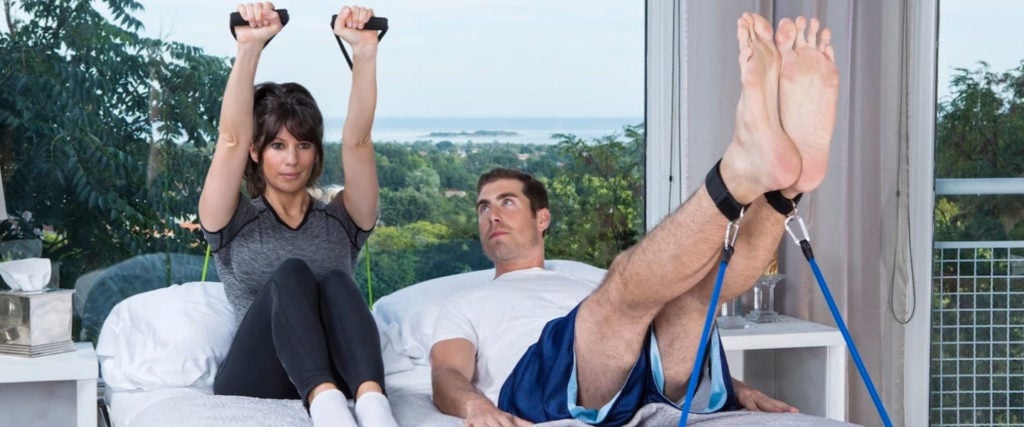I spend probably 80 percent of my time reclined in some capacity. I absolutely love to lay down. I’m laying down on my couch as I write this. It’s called self-care, sweetie. Thing is, I actually enjoy exercising, too, but the pull to exercise is nowhere near as strong as the pull to be reclined. Standing while working out? Absolutely not my thing.
Laying down on a yoga mat on the floor to workout is okay, but it can hurt my spine, so when I heard of a product called “BedGym,” I was like, yeah, absolutely, I’m the right demographic for this. You mean to tell me I can turn my favorite location into a place of vigorous exercise (as if it wasn’t already, wink wink)? Say no more.
BedGym basically turns your bed into a combination of a pilates reformer and weight machine, except you’re only using resistance cables. The product is essentially a belt you attach around the perimeter of your mattress, with loops every few inches where the cables can be hooked in. There are two cables with handles and two with ankle straps. There was a bit of a learning curved involved in setting it up, but it wasn’t all that challenging or intensive. I had my boyfriend do most of the work, as I am wont to do, but I could have done it myself without needing to lift my entire mattress. Depending on where you place the cables, they look a lot like sex restraints and, quite frankly, they could probably function this way, too.
An able-bodied person probably isn’t going to get too intense of a workout from the BedGym –– again, it’s akin to pilates in this way. The moves one can do when reclined and holding the resistance cables are all very similar to those one might do in a traditional pilates class, emphasizing long, precise movements and stretches. While actually laying on the bed, I found my abs to be most affected — it was easy to get that “burn” feeling. As they advertise on the website, this is potentially because the instability of the mattress requires your abs to work harder to support you. The BedGym also offers several options for use when not in bed, wherein the bed is more a means of providing weighted resistance. For example, you can use the ankle straps to perform standing leg abductions.
One caveat to all this, though, is that I can’t foresee a way to increase the intensity of the workout should one become too comfortable with the level of resistance offered. But this ultimately points to the utility of the product as a whole. The people who would benefit the most from BedGym aren’t those looking for an exhaustive home workout: Instead, BedGym is more for people like me who simply need an extra push to exercise, but more significantly, it’s for people with limited mobility for whom the bed is the only place they can exercise at all.
There are a lot of products that people are quick to judge as aiding laziness when, in fact, the product actually helps assist disabled folks to independently perform the tasks that able-bodied people might take for granted. Grabber tools and devices like this sock holder have been subject to this in the past, and I can envision BedGym receiving the same treatment. From my perspective, BedGym seems like a decent option for both exercise and physical therapy for people who are confined to their bed, or otherwise have difficulty with traditional forms of exercise.
But even as an able-bodied person, I like having the BedGym around. It doesn’t take up any space at all, and its very presence is a reminder to work out. When I’m inclined to go flop myself onto my mattress, I at least consider doing a few exercises instead.

